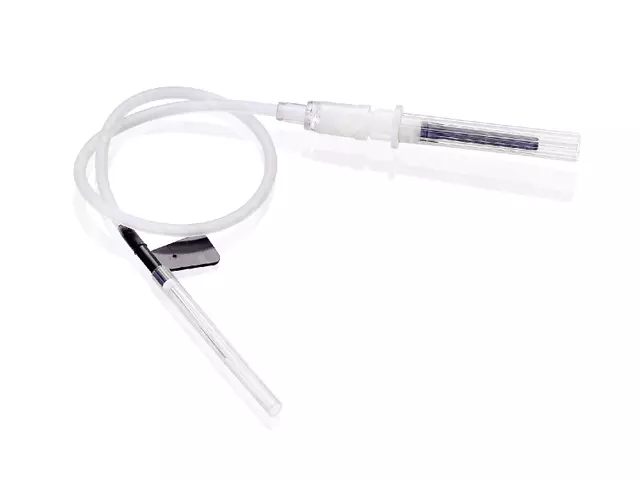Optimizing Laboratory Efficiency and Accuracy with a High-Performance ESR Tube Stand
In clinical diagnostic laboratories, the erythrocyte sedimentation rate (ESR) test remains one of the most frequently performed procedures for evaluating inflammation and monitoring disease progression. Although the analytical method itself is straightforward, the accuracy and reproducibility of ESR measurements depend heavily on the stability and positioning of the tubes during testing. This is where a high-quality ESR tube stand becomes indispensable. More than just a basic holder, a well-designed ESR tube stand contributes to the precision, safety, and operational efficiency of routine laboratory workflows.
This article provides an in-depth look at the design, functional features, material considerations, and performance benefits of using a professional ESR tube stand. It also outlines how laboratories can optimize their workflow by selecting the right stand for their operational volume, tube format, and analytical requirements. Throughout the discussion, the keyword ESR tube stand is integrated naturally to maintain strong SEO performance while preserving readability and professional clarity.
Understanding the Functional Purpose of an ESR Tube Stand in Clinical Testing
The primary role of an ESR tube stand is to keep ESR tubes upright and stable throughout the entire sedimentation period. Because the erythrocyte sedimentation rate depends on precise vertical orientation, even slight deviations in angle can affect the measurement. A reliable ESR tube stand ensures consistent positioning and eliminates instability caused by accidental movements, vibrations, or uneven surfaces.
In laboratories processing numerous ESR samples simultaneously, the stand becomes a system for organization as much as a stability tool. Analysts need clear visibility, easy access, and structured tube placement to prevent mix-ups or misidentification. A well-designed stand supports all these functions by offering fixed slots, secure holding mechanisms, and intuitive layout options. By maintaining optimal tube alignment, the ESR tube stand significantly contributes to the accuracy and reproducibility that clinicians depend on when interpreting results.
Another critical function is reducing manual handling. Excessive handling increases the risk of disturbing sedimentation, contaminating samples, or tipping tubes. A sturdy ESR tube stand allows technicians to place tubes once and leave them undisturbed, reducing variability and promoting efficient workflows.
Key Design Features That Enhance the Performance of an ESR Tube Stand
A high-performance ESR tube stand incorporates several essential design elements that collectively improve safety, usability, and analytical accuracy. Understanding these features allows laboratories to choose a stand that aligns with their operational needs.
Stable and Vibration-Resistant Base
The base is the foundation of any ESR tube stand. It must be heavy enough or engineered with anti-slip materials to resist vibration from nearby centrifuges, analyzers, or foot traffic. A stable base prevents micro-movements that can disrupt sedimentation within the tubes.
Some advanced stands utilize rubberized pads or weighted metal cores to enhance stability without adding excessive bulk. This ensures the ESR tube stand maintains its position even in high-activity laboratory environments.
Precision-Aligned Tube Slots
Each slot should be calibrated to maintain perfect vertical alignment. Whether the stand accommodates Westergren, Wintrobe, or proprietary ESR tubes, the bore size and position must be precise. Misaligned slots or inconsistent spacing can compromise test accuracy.
An effective ESR tube stand includes:
Uniform slot depth
Straight vertical channels
Smooth edges to prevent tube scratching
Consistent spacing for easy sample identification
Precision alignment ultimately ensures that each ESR tube sits exactly in the position required for accurate sedimentation.
Clear Visibility and Labeling Options
Laboratories rely on barcoded tubes, ID labels, and color-coded caps. Therefore, the ESR tube stand must allow unobstructed visibility of all identifying information. Poor visibility can jeopardize sample integrity and lead to costly mistakes.
Stands with open-front or transparent slot designs enable staff to read labels without removing tubes. Some models include numbering or alpha-numeric grid systems to further support organization.
Chemical and Temperature Resistance
ESR testing typically occurs at room temperature, but stands may still come into contact with disinfectants, cleaning solutions, or accidental spills. Therefore, the material of the ESR tube stand should resist corrosion, chemical degradation, and warping.
Common high-quality materials include:
Medical-grade plastics
Polypropylene (PP)
Polycarbonate (PC)
Stainless steel
These materials provide durability in demanding laboratory settings.
Modular or Expandable Configurations
Large laboratories may process hundreds of ESR tests daily. Modular ESR tube stands allow users to join multiple units together, expanding capacity without sacrificing stability. This flexibility ensures seamless integration into existing laboratory benches or automation lines.
Material Considerations When Choosing an ESR Tube Stand
The material of an ESR tube stand affects durability, chemical compatibility, usability, and cost. Selecting the optimal material depends on laboratory workload, cleaning protocols, and environmental conditions.
Polypropylene ESR Tube Stands
Polypropylene stands are lightweight, economical, and resistant to most disinfectants. They work well in moderate-volume settings where portability and ease of cleaning are important. PP stands also maintain structural integrity and vertical alignment, making them a reliable choice for routine ESR testing.
Polycarbonate ESR Tube Stands
When superior transparency is required, polycarbonate stands offer excellent visibility. Their clear structure allows technicians to easily view sedimentation progress and tube labeling. Polycarbonate is sturdier than standard plastics, offering increased impact resistance.
Stainless Steel ESR Tube Stands
For laboratories requiring maximum durability and structural stability, stainless steel is preferred. These stands are nearly indestructible, resist corrosion, and withstand rigorous cleaning cycles. The weight of stainless steel also provides outstanding stability, making it ideal for high-traffic or automated environments.
Composite or Hybrid Materials
Some advanced ESR tube stands combine materials—for example, stainless steel frames with polypropylene tube slots—to balance cost, durability, and chemical resistance. These hybrid designs ensure long service life and enhanced performance.
Enhancing Workflow Efficiency with a Well-Designed ESR Tube Stand
Laboratory technicians operate under strict time constraints and need equipment that supports speed and accuracy. A thoughtfully engineered ESR tube stand streamlines workflow by organizing samples, minimizing handling, and providing intuitive layout options.
Efficient Sample Organization
Well-spaced, clearly labeled slots help technicians place tubes in sequence, reducing the risk of mixing samples. This is especially useful during peak testing periods when multiple patients’ samples arrive simultaneously. The ESR tube stand becomes a visual management tool that enhances workflow efficiency.
Reduced Handling Errors
Once tubes are positioned, the stand eliminates the need for repeated adjustments. This is critical because unnecessary tube movement can disturb red cell sedimentation. By keeping tubes stationary, the stand protects the integrity of the test.
Faster Cleaning and Maintenance
Smooth surfaces, chemical-resistant materials, and modular construction simplify cleaning. Because ESR testing involves biological samples, frequent sanitization is essential. A high-quality ESR tube stand can be wiped down quickly without degrading over time.
Safe Sample Positioning
By securing tubes at a consistent height and angle, the stand ensures technicians do not need to recheck alignment. This minimizes time spent on repetitive tasks and provides confidence in measurement accuracy.
Safety Advantages of Using a High-Quality ESR Tube Stand
Beyond operational efficiency, safety is another critical reason laboratories invest in premium ESR tube stands. Properly designed stands help reduce exposure to biohazardous materials and prevent accidents involving fragile glass or plastic ESR tubes.
Reduced Risk of Tube Breakage
Accidental tipping is one of the most common hazards during ESR testing. A sturdy ESR tube stand significantly decreases the risk of tubes rolling, falling, or breaking. This protects technicians and minimizes sample loss.
Lower Exposure to Biohazardous Fluids
When tubes remain secure within the stand, the potential for spills is greatly reduced. This is essential during the sedimentation period when tubes must stay untouched for an extended time.
Enhanced Laboratory Hygiene
Because stands keep tubes upright and organized, contamination risks are lower. The stand helps maintain an orderly working surface, which is essential when handling blood samples.
Capacity and Configuration Options for ESR Tube Stands
Different laboratories require different ESR testing capacities, and selecting the correct configuration can significantly improve workflow.
Single-Row ESR Tube Stands
These compact stands are ideal for small or medium-volume laboratories with limited bench space. Despite their smaller size, they offer strong stability and precise alignment.
Multi-Row ESR Tube Stands
For high-volume environments, multi-row stands offer increased capacity in a compact footprint. They are designed to accommodate dozens of tubes while maintaining clear visibility and easy access.
Modular ESR Tube Stands
These systems allow labs to customize capacity. Units can be connected side-by-side or stacked, creating flexible ESR workstations that grow with testing demand.
Automation-Compatible Designs
Some advanced ESR tube stands integrate seamlessly with automated analyzers or robotic sample handling systems. These stands ensure accurate positioning while meeting stringent equipment compatibility requirements.
How to Choose the Right ESR Tube Stand for Your Laboratory
Selecting the right ESR tube stand requires analyzing the unique needs of the laboratory. Important factors include the volume of ESR tests, the type of tubes used, available bench space, and the desired level of durability.
Evaluate Daily Testing Volume
High-volume laboratories benefit from multi-row or modular stands. Smaller labs may prefer single-row designs that conserve space.
Check Tube Compatibility
Ensure that the stand supports the specific ESR tubes in use—Westergren, Wintrobe, or proprietary designs. Slot dimensions should match tube diameter and height.
Consider Stability Requirements
If the laboratory environment involves heavy equipment or frequent movement, selecting a stand with anti-slip pads, weighted bases, or stainless steel construction is ideal.
Assess Cleaning and Chemical Resistance
Look for materials that withstand repeated exposure to disinfectants. Polypropylene and stainless steel are excellent choices for rigorous cleaning routines.
Determine Organizational Needs
Numbered slots, color-coding options, and clear visibility help prevent sample errors. Facilities with frequent batch testing benefit greatly from these features.
Maintenance Best Practices to Extend the Service Life of an ESR Tube Stand
Although ESR tube stands are generally low-maintenance tools, proper care ensures long-term performance and safety.
Routine Cleaning
Regular cleaning with appropriate disinfectants prevents contamination and preserves the stand’s structural integrity. Smooth, non-porous surfaces are easiest to sanitize.
Inspection for Damage
Technicians should periodically check for cracks, bent components, or worn anti-slip pads. Any compromised stand should be replaced immediately to avoid affecting test accuracy.
Correct Usage
A stand should only be used for its intended tube sizes. Overloading or inserting incorrect tube formats may cause misalignment or damage.
Proper Storage
When not in use, storing the ESR tube stand in a clean, dry area protects it from unnecessary wear.
Conclusion: Why a High-Quality ESR Tube Stand Is Essential for Accurate and Efficient Laboratory Testing
A carefully designed ESR tube stand is far more than a simple rack—it is a critical component of accurate and reliable ESR testing. By providing stable tube positioning, clear visibility, chemical resistance, and user-friendly organization, it enhances both test precision and workflow efficiency. Laboratories that invest in a durable and well-engineered ESR tube stand gain measurable benefits in accuracy, safety, and operational productivity.
Whether in a small clinical lab or a high-throughput diagnostic center, the ESR tube stand plays a vital role in ensuring that erythrocyte sedimentation rate results remain consistent and trustworthy. Selecting the right stand, maintaining it properly, and integrating it into an organized workflow ultimately supports better clinical decision-making and improved patient care.




